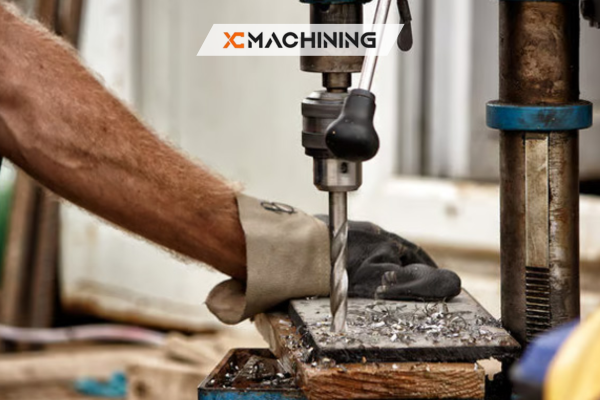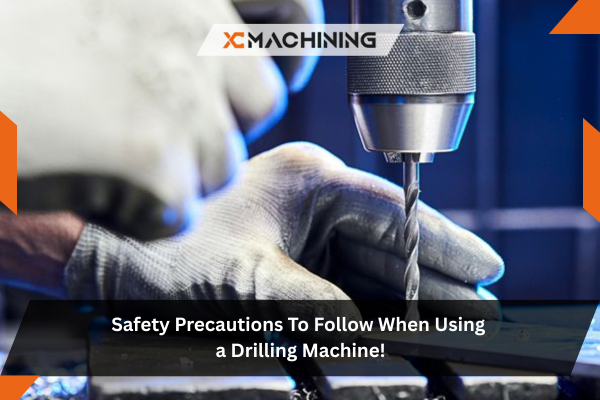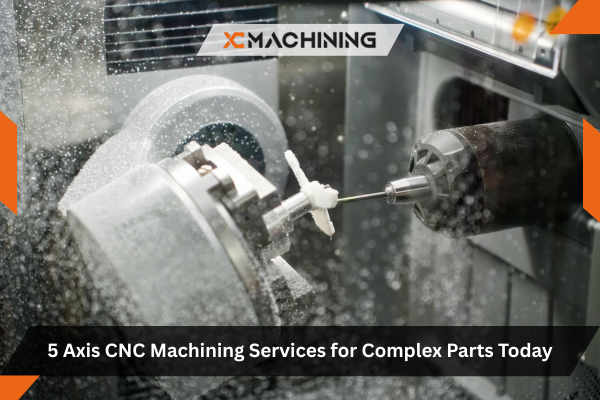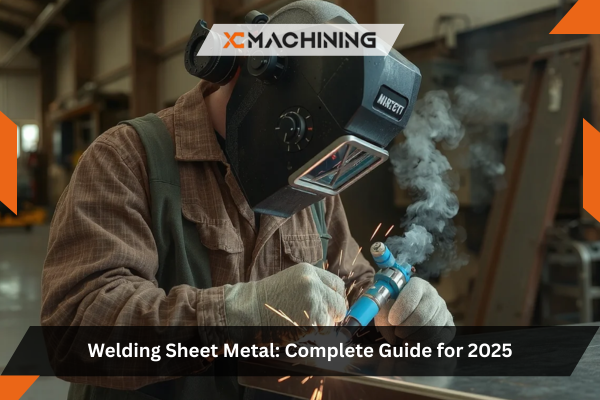Have you ever stopped to think about the safety measures you should take before firing up that drill? A drilling machine is an essential tool for any workshop, whether you’re working on wood, metal, or plastic. However, just like any power tool, they come with risks if not used properly. Using a drilling machine can be dangerous, but with the right precautions, you can avoid injuries and keep your work area safe.
Let’s break down the key safety precautions you need to follow when using a drilling machine.
Wear Protective Gear When Using a Drilling Machine
Before you even think about turning on a drilling machine, the first step is making sure you’re properly protected. This might seem obvious, but wearing the right safety gear can prevent serious accidents. If you’re handling a power tool like a drill, you need to protect your eyes, hands, and ears.
- Safety Glasses: Drilling can send bits of debris flying, especially when working with harder materials like metal or concrete. Safety glasses or goggles will shield your eyes from particles that could cause serious harm.
- Ear Protection: Drilling machines can be loud, and prolonged exposure to loud noises can cause hearing damage. Always wear earplugs or earmuffs when operating a drilling machine to protect your hearing.
- Gloves: Wear gloves that fit properly. Loose gloves can get caught in the machine, so make sure they’re snug, but not too tight. They’ll protect your hands from sharp edges or flying debris.
- Apron: If you’re working with materials like wood or sheet metal fabrication, an apron can help protect your body from debris, especially small, sharp objects.
Wearing protective gear isn’t just a recommendation—it’s a must. No matter how skilled you are, safety gear will help minimize the risk of injury.
Secure the Workpiece
When you’re drilling, the workpiece—whether it’s wood, metal, or plastic needs to be held securely in place. A loose or shifting piece can lead to mistakes, or worse, accidents. Imagine milling cutter into something that moves unexpectedly—it could cause you to lose control of the drill, leading to a possible injury.
There are several ways to secure your workpiece:
- Clamps: Using clamps to hold your material in place is one of the simplest and safest ways to secure it. You can find various clamps for different shapes and sizes of workpieces.
- Vices: For more precise drilling, use a bench vice. A vice holds the material tightly, leaving your hands free to operate the machine.
- Jigs and Fixtures: For repetitive tasks, jigs and fixtures can ensure that your workpiece stays put in the same position.
You can’t drill a thing properly if it’s not secure. By making sure your workpiece is fixed in place, you’re helping to prevent any unwanted movement that could lead to mistakes or accidents.
Use the Correct Drill Bit
Selecting the right drill bit for the job is more important than you might think. Using the wrong drill bit can damage both the material you’re working on and the drilling machine itself. For example, using a wood drill bit on metal could result in an inefficient laser cutting or a broken bit. Similarly, using the wrong size bit can cause the hole to be too small or too large, leading to wasted material.
Here’s how you can choose the right bit:
- Material Type: Make sure the drill bit is suitable for the material you’re drilling into. For example, carbide or cobalt bits are ideal for hard metals, while high-speed steel (HSS) bits are better for softer materials like wood or plastic.
- Size Matters: Pick the correct size bit for your job. Too big or too small a bit could cause issues with the fit or the efficiency of the drilling process.
- Condition: Always check the drill bit for wear and tear. A dull or damaged bit will not only make the job harder but could cause the machine to overheat or malfunction.
Using the right drill bit ensures you work efficiently and safely. Don’t skimp on this step!

Check the Drill Bit for Damage
Before you start drilling, it’s essential to check your drill bit for any signs of damage. A broken or worn-out bit can cause all sorts of problems. It may get stuck in the material, break mid-drill, or even cause the drill machine to malfunction.
Here are some things to look out for:
- Cracks or Chips: Even small cracks can lead to a bigger problem. A chipped or cracked drill bit is much more likely to break while drilling.
- Worn Edges: If the edges of your drill bit are dull or worn down, it will be harder to drill through your material, and you may end up damaging the material or the machine.
- Rust: Rust can weaken a drill bit, making it more likely to snap or perform poorly.
Inspecting your drill bit before use only takes a few seconds but can save you a lot of trouble down the line.
Keep Your Hands Away from the Drill Bit
It might sound obvious, but it’s easy to forget in the heat of the moment. Always keep your hands and other body parts well away from the spinning drill bit. Even if you’re using a machine that has safety covers, your hands should stay clear of the moving parts.
Here are a few quick tips:
- Don’t Reach Over the Drill Bit: Never reach over or around the spinning drill bit. Always position yourself so that you’re not at risk of coming into contact with the bit.
- Use the Handles: Most drilling machines have handles designed to keep your hands safely away from the drill bit. Use them to maintain control.
Keeping your hands away from the drill bit is the easiest way to prevent cuts or other serious injuries.
Don’t Wear Loose Clothing or Jewelry
Loose clothing, jewelry, or accessories are a big safety hazard around a drilling machine. A dangling necklace or sleeve can easily get caught in the machine, pulling you or the CNC plastics material into the drill.
Here’s what you should do:
- Tighten Up: Always wear tight-fitting clothes that won’t get caught in the machine. Roll up loose sleeves and avoid wearing jewelry, especially rings, bracelets, or necklaces.
- Hair Safety: If you have long hair, tie it back to prevent it from getting tangled in the machine.
Keeping your body and clothing away from moving parts minimizes the chance of getting caught in the machinery.
Clear the Work Area
A cluttered workspace can be as dangerous as using the machine incorrectly. A drilling machine can create debris and dust, which can easily lead to accidents if they get in your way. It’s essential to keep your work area clear and organized.
Here’s how to keep things clean and safe:
- Remove Unnecessary Items: Keep only the tools and materials you need within reach. Remove anything that could get in your way or that you might accidentally knock over.
- Clean Up Debris: Always clean up any debris or dust after drilling. Dust can make the floor slippery, and loose pieces of material can get in your way while you’re working.
A clean, organized workspace will not only keep you safe but will also help you stay focused on the job at hand.
Turn Off the Machine Before Making Adjustments
When you’re changing drill bits, making adjustments, or setting up a new workpiece, always turn off the drilling machine. It’s tempting to make quick adjustments while the machine is still running, but that’s one of the quickest ways to get hurt.
Here’s why:
- Accidental Activation: The machine can easily start up unexpectedly, especially if you’re adjusting the settings or swapping out the drill bit.
- Mechanical Risk: Working with a running machine increases the chances of something going wrong, such as getting caught in the spinning parts or damaging the machine.
Turning off the drill ensures your safety and keeps things under control.
Get Training
Finally, proper training is essential when operating any drilling machine. If you’re not trained, you’re more likely to make mistakes that could result in injury. Even if you’ve used a drill before, it’s always a good idea to brush up on safety guidelines and proper techniques.
Training can cover important areas like:
- Machine Setup: Learning how to correctly set up the machine and secure the workpiece.
- Techniques: Understanding the right way to handle materials and operate the drill.
- Troubleshooting: Knowing what to do if something goes wrong during the drilling process.
If you’re new to drilling or want to improve your skills, take a class or get hands-on training from an expert.
Machine Maintenance and Inspection:
Regularly inspecting and maintaining your drilling machine is crucial to ensure both safety and performance. A well-maintained drill works more efficiently and is less likely to cause accidents. If you neglect regular checks and upkeep, you risk breakdowns, increased wear, and potential safety hazards. So, how do you keep your drill in top shape? Let’s dive into some key aspects of machine maintenance and inspection.
Regular Inspection
Before you even think about using your drilling machine, you should always conduct a thorough inspection. Regular inspection ensures that any issues—whether minor or major—are detected early, before they can become a hazard.
Here’s a quick checklist of things to inspect:
- Worn-Out Parts: Look for any parts that show signs of wear and tear, such as the chuck, drill bit, or spindle. Worn parts can lead to malfunction or cause dangerous situations.
- Electrical Components: If your drill is powered electrically, check all wiring and connections. Frayed wires or exposed electrical components can lead to electrical hazards.
- Loose or Missing Fasteners: Tighten any loose screws, bolts, or nuts. A loose part can lead to inaccurate drilling or, in some cases, machine failure during operation.
- Safety Features: Inspect the safety features like emergency stop buttons and shields. These should always be in working condition and easily accessible.
Regular inspections should be done every time you use the CNC machining, especially if it’s been sitting idle for a while. Also, schedule periodic deep checks at regular intervals depending on how often the machine is used.
Lubrication
Proper lubrication is often overlooked but is one of the most important maintenance tasks for any drilling machine. Lubrication helps to reduce friction between moving parts, prevents overheating, and ensures smooth operation. Without adequate lubrication, your machine could overheat, wear out more quickly, and be less effective overall.
Here are the lubrication tips you should follow:
- Oil Moving Parts: Ensure that all moving components, like the chuck, spindle, and feed mechanisms, are lubricated regularly. Use the appropriate lubricant as recommended by the manufacturer.
- Clean Before Lubricating: Before applying oil, make sure all parts are free of dust, dirt, or old oil residue. This ensures that the lubricant can work effectively and doesn’t cause more damage.
- Check the Manufacturer’s Recommendations: Different machines might require specific types of lubricants. Always refer to the manufacturer’s guidelines to choose the right oil or grease.
By keeping your drilling machine well-lubricated, you reduce wear and tear, increase its lifespan, and improve its efficiency.

Sharp Drill Bits
Sharp drill bits are crucial for clean, accurate holes and to reduce the risk of accidents. Dull drill bits increase the strain on the undercut machining, resulting in longer drilling times, more heat, and a higher risk of the bit breaking.
Here’s how to maintain sharp drill bits:
- Regular Inspection: Check the drill bits before each use to ensure they’re still sharp. If you notice them becoming dull or chipped, sharpen or replace them immediately.
- Proper Sharpening: Use the right equipment to sharpen drill bits, such as a sharpening tool or a grinding machine. Ensure the drill bit retains its proper angle to maintain efficiency.
- Avoid Overheating: Don’t push the drill bit too hard into the material. Overheating the bit can cause it to lose its sharpness quickly and even crack.
A sharp drill bit makes the job easier, improves the quality of your work, and keeps you safe by reducing unnecessary force and heat.
Conclusion
Using a drilling machine can be incredibly rewarding, but it’s important to take the proper precautions. From wearing protective gear to securing your workpiece, every step counts in keeping yourself safe. Do you feel ready to take on your next project with all the safety measures in place?
FAQs
What is a drilling machine used for?
A drilling machine is primarily used to create holes in various materials, including wood, metal, plastic, and concrete. It is also used for tapping, reaming, countersinking, and boring, making it a versatile tool for construction, manufacturing, and DIY projects.
What types of drilling machines are available?
Drilling machines come in several types, such as portable hand drills, bench drills, pillar drills, radial drills, and CNC drilling machines. Each type is suited for specific applications, ranging from lightweight tasks to industrial operations.
How do I choose the right drill bit for my material?
The choice of drill bit depends on the material being drilled. For example, high-speed steel (HSS) bits work well for metal, masonry bits are ideal for concrete, and brad-point bits are suitable for wood. Always match the bit to the material to ensure clean cuts and prolong tool life.
What are the common problems in drilling and how can I fix them?
Common problems include overheating (resolve by using coolant or lower speed), bit slipping (tighten the chuck), and uneven holes (check alignment and use a pilot hole). Regular maintenance and proper technique minimize these issues.





